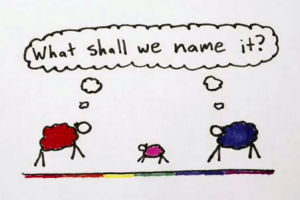What?
The colour pink doesn’t exist? Actually, no, technically it doesn’t.
Want to know why? Follow these steps to learn more English AND why we “invented” a colour.
1. Read the text
2. Understand the vocabulary
3. Watch the mini-documentary
Text
We’ve all been told that the colors of the rainbow correspond to different wavelengths of visible light – red, orange, yellow, green, blue, and violet.
Where’s pink in that list? It isn’t there. There is simply no pink light. So where does pink come from? It turns out that pink, (or magenta, fuchsia, or whatever you want to call it) is actually a mix of red and blue light – light from both ends of the rainbow that our brains see as one color.
If you try to roll up the rainbow to make a color wheel, there’ll be a gap between red and violet. That’s where all the rest of the light in the universe is supposed to go – radio waves, microwaves, infrared, ultraviolet, x-rays, gamma rays, and so on. But since we can’t see any of those wavelengths, we replace all that hidden grandeur with pink.
And speaking in terms of light, pink should probably be called “minus-green”, because pink is just the leftovers from white light when you take out the green.
Vocabulary

Turns out – to happen, end, or develop in a particular way.
Roll up – to fold up the ends of something to make it shorter or into a circle.
Gap – a hole or space where something is missing.
Replace – to be used instead of (something).
Grandeur – a great and impressive quality.
Leftovers – a thing that remains after something is finished or ended.

 ABA Journal The digital English academy
ABA Journal The digital English academy




